When Was The Guitar Invented?
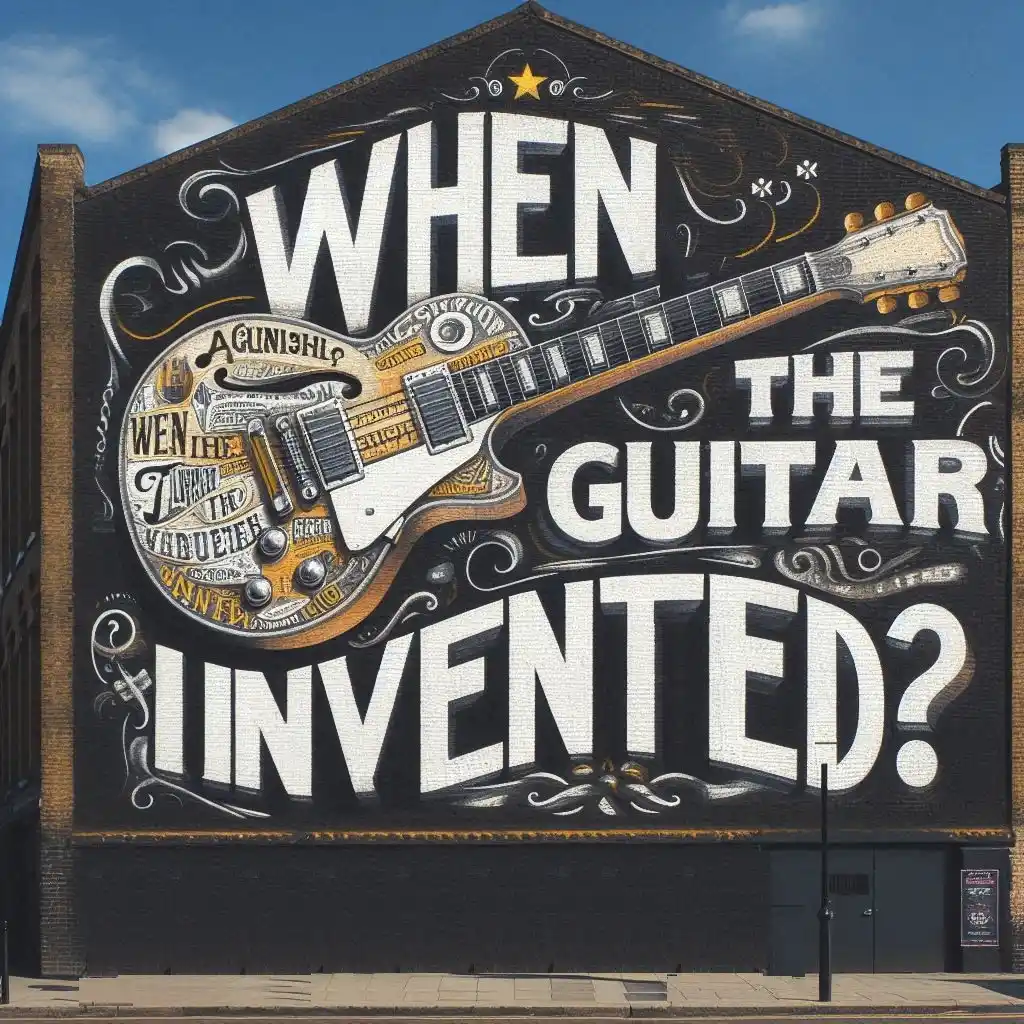
The guitar, an instrument synonymous with rock ‘n’ roll, blues, and countless other musical genres, boasts a fascinating history that dates back thousands of years. Originating from ancient civilizations, it has evolved over time, taking various shapes and forms, and creating a lasting impact on the world of music.
In this post, we will explore the rich history of the guitar, examining its various transformations and innovations that have made it the beloved instrument we know today.
Table of Contents
Early Origins
The origins of the guitar can be traced back to the stringed instruments of ancient civilizations. Among the earliest known ancestors of the guitar are the tanbur, a Middle Eastern lute dating back to 1500 BCE, and the sitar, an Indian instrument from around 700 CE. These instruments featured a hollow wooden body and a long neck with multiple strings, characteristics that would later influence the development of the guitar.
Although the predecessors of the guitar have been known for thousands of years, what is certain is that horns and percussion instruments are much older than stringed instruments. But, as with other musical instruments, the development of the guitar also relies on an essential human trait: the desire to express feelings that cannot be expressed in any other way. The guitar is a chordophone instrument. Chordophone means that sound is produced by the vibrations of a string. The name is made up of the Greek word “chordae,” which means string and telephone (tone/sound).
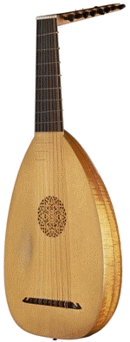
Alexander the Great conquered almost the entire civilized world around 385 BC. His empire also included Persia, Egypt, and Greece, which caused cultural transfer between these peoples. The Assyrian zither was passed on to the Greeks and then to the Romans, who named the instrument Cithara romana. A thousand years later, instrument makers in the south of France added a neck and fingerboard and called their instrument Chrotta. Around 100-200 AD, the Lute appeared in Rome only briefly and disappeared for centuries after the destruction of the Roman Empire.

The zither and arched rebab were played widely in Spain and Portugal during the Middle Ages and later throughout Europe. The rebab resembled a mandolin (pear-shaped) with a flat top, two sound holes, a bridge, and a short neck.
In the 12th century, a new Spanish instrument appeared: the Laud, which had both a guitar and a pear-shaped instrument. This instrument is descended from the Arabic Lute known as the ‘Oud,’ which came to Spain during the Moorish invasion. Laud was later played in the rest of Europe. Known in Germany as ‘Lauthe’ and in France as ‘Lute.’
The design of the first guitars borrowed the basics of both the Arabic oud and the French Chrotta. Numerous religious wars forced many Hrotta players to travel to Aragon and Catalonia, and crossovers between Hrotta and Lutta arose there. This event probably sparked the development of the guitar.
During this same period, Marco Polo returned to Italy from his travels, bringing with him a collection of guitars and lutes from India and China.
In the 13th century, the Spanish church banned the rebab, considering it an instrument of the devil. However, among the common people, the rebab was the most favorite instrument and also ignored the church’s prohibition on using a musical instrument. Until the 16th century, the rebab underwent minor changes and later the instrument became known as the mandola, which was especially popular in Spain.
Renaissance and Baroque Eras
Instrument makers experimented with sound, sound projection, and wood types and shapes. The flat-back design concept came back into fashion, resulting in the Vihuela, the direct predecessor of the modern guitar.
Its name comes from the Roman term Fidula. The instrument resembled a modern guitar, was oval in shape, had five sound holes at the top, a short neck with ten frets, five pairs of strings plus one resonant string. Like the modern twelve-string guitar, pairs of strings were tuned the same or one octave higher.
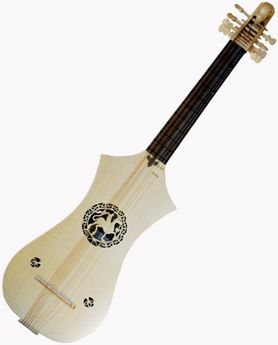
There were variations of models, also with four or seven pairs of strings. The richly decorated vihuela was very expensive, so the common man preferred the four-stringed chitarra latina, which was very similar to the vihuela, but simpler. The Latina Chitarra dates from the late thirteenth century and had eight sound holes in the shape of twice four circles.
At the beginning of the sixteenth century, a fifth string was added to the chitarra latina. Today we know this new version as the Spanish guitar.
The vihuela, along with the four-stringed guitarra morisca, and the guitarra latina, paved the way for the classical guitar we recognize today.
Soon this five-string guitar appeared everywhere and gradually replaced the more complex Lute. Lute aficionados denounced the guitar and tried to ruin its reputation by associating the guitar with obscene bodily movements and moral destruction. Therefore, in the past, the situation was no different from the current one, when the instrument was subject to innovation.
Also in the 50s and 60s, when the electric guitar became more popular, the instrument was prohibited by morality. And even now, as then, the more the guitar was compared to this kind of thing, the more dominant its position became in European folk music. Romantic people serenaded the ladies who liked to hear it. In the same way, today ladies and gentlemen are going crazy for their favorite artists.
French and Italian guitars of the 17th century had slimmer waists, and almost all were shaped like the guitar as we know it today. However, an important difference was the five pairs of strings instead of the six or twelve of the current guitar.
During the Renaissance and Baroque eras, the guitar experienced significant growth in popularity. The Baroque guitar, a smaller instrument with five doubled strings, emerged as a favorite among musicians and composers. The Baroque guitar was often used for accompanying singers and dancers, and it played a vital role in the development of guitar techniques and compositions.
Classical Era and Romantic Period
Carulli’s 1810 guitar was one of the first to use six strings, tuned the same as today’s: E A D G B E. They switched from double strings to single strings. This also solved tuning problems caused by pairs of gut strings not being the same diameter.
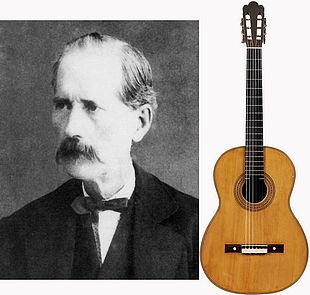
The late 18th and early 19th centuries saw the rise of the six-string guitar, which would become the standard design for the instrument. The classical guitar, as it is now known, was the result of innovations by Spanish luthiers such as Antonio Torres Jurado, who improved the instrument’s size, shape, and sound quality.
He made a major contribution to the development by increasing the length of the man-hour to 65 centimeters. He also made the neck 5 centimeters narrower and made a wider body, which gave the instrument more volume. He was one of the first to use mechanical tuning mechanisms and widened the support bars so that the strings on the body were slightly wider apart.
The modern classical guitar has changed little since then, with one of the last innovations appearing in the mid-1940s. The strings, which were previously made from pig intestines, were replaced by nylon. Invented by American chemist Wallace Hume Carothers in 1935.
These enhancements made the classical guitar the preferred choice for virtuosic performers and composers like Fernando Sor, Mauro Giuliani, and Francisco Tárrega.
The guitar became an increasingly popular instrument and more and more music was written. Rossini, Haydn, Berlioz, and Schubert, among others, composed for guitar.
At the end of the 19th century, Francisco Tárrega revived Spanish music. Modern classical guitarists still have his compositions in their repertoire. He made various arrangements of Chopin, Beethoven, and Bach.
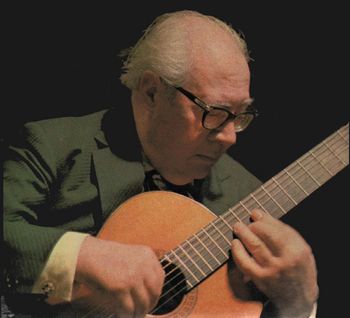
The fact that the guitar has become widely accepted as a modern concert instrument is due in part to Andres Segovia, one of the greatest musicians in history. Andres was self-taught and formed a one-man orchestra on his own. He also arranged many works for guitar by Haydn, Handel, Mozart, and many others. For over fifty years he has performed all over the world and been an ambassador for his favorite instrument, the guitar.
The 19th-century Romantic period saw the proliferation of guitar music across Europe, with the instrument becoming a staple in salons, concert halls, and private homes. This period also saw the invention of the first resonator guitars, which used metal cones to amplify the sound, foreshadowing the eventual development of the electric guitar.
Early 20th Century: Birth of the Steel-String Guitar
The turn of the 20th century witnessed the birth of the steel-string guitar, a major milestone in the instrument’s history. Developed in the United States, the steel-string guitar quickly gained popularity due to its louder and brighter sound, which was better suited to accompany larger ensembles and growing musical styles like blues, jazz, and country. The steel-string guitar’s popularity soared, and it soon overtook the classical guitar in terms of prominence in the United States.
In the early 20th century, guitar makers such as C.F. Martin and Orville Gibson further revolutionized the instrument by introducing innovations like the X-bracing system and the archtop guitar. These enhancements further increased the guitar’s volume and tonal range, making it even more versatile and desirable.
In the late 1930s, the Chicago-based Regal Musical Instrument Company introduced the Bassoguitar, which could be called a bass guitar. The instrument was a cross between a flat acoustic guitar and a double bass and was 1.80 m long.

The first Earthwood acoustic bass guitar appeared in 1972. It was designed by Ernie Ball with former Fender associate George Fullerton. However, Earthwood was not a success and production ceased in 1974.
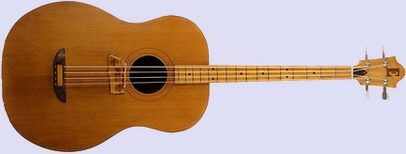
The Electric Revolution
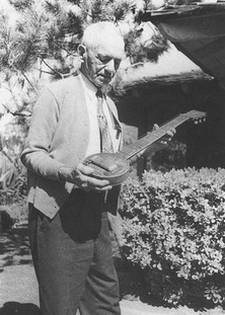
In the 1930s, the electric guitar emerged, forever changing the landscape of popular music. Inventors like George Beauchamp and Adolph Rickenbacker pioneered the development of the electric guitar, which used magnetic pickups to amplify the vibrations of the strings, producing a much louder and more powerful sound.
Adolph Rickenbacker, maker of the first electric guitar and founder of the Electro String Instrument Corporation, was born in 1886 in the canton of Schwyz, Switzerland. After the death of his parents, he emigrated with some family members to the United States in 1891. In 1928 he moved to Los Angeles. Here he founded the Rickenbacker Manufacturing Company and manufactured metal bodies for the National Steel Guitars Company. There he met George Beauchamp and Paul Barth.

Together they founded a new company in 1931, the Ro-Pat-In Company. The following year they began developing the first aluminum versions of the steel guitar. In 1934, the company name was changed to Electro String Instrument Corporation. The steel guitar was and remains especially popular in “Hawaiian” music, where it often dominates.
Lap Steel Guitar means the guitar is played horizontally. While seated standing (on a stand or with a strap around the neck), a steel rod (playing rod) or bottleneck is used to “slide” across the strings. Other terms for steel guitar are steel guitar or slide guitar.
Back in 1930, Beauchamp was experimenting with a well-known fact: if you move a copper wire along a magnetic field, it will change the strength of the magnetic field. He wrapped copper wire around a magnet and thus made a coil. Above this coil, he held a metal wire (string). The movement (vibration) of this wire changed the electric current in the coil. With this information, it will be possible to electrically amplify the sound of the guitar. The problem now was that he needed to have six of these (large) coils that had to be tuned to get an even signal so he could use them on the guitar.
After a lot of experiments, Beauchamp created together with Barth two horseshoe magnets (based on a pickup with copper wire wound iron rods) each with its own opening under the strings. In this way, each string could be individually amplified.
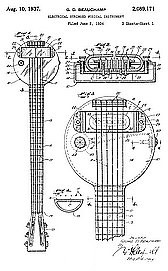
George Beauchamp contacted Harry Watson, then Chief Superintendent of National String Instrument Co. Watson was impressed by Beauchamp’s invention and produced a model with a single-piece neck and body. Then he mounted the electric amplification element developed by Beauchamp and Barth at the bridge of the body. Beauchamp named this prototype ‘The Frying Pan.’
The Frying Pan is the first electric guitar that was taken into production and worked according to the principle still applied today. The Frying Pan proved an immediate success with countless steel guitarists.

But already in 1925, one Lester William Polsfuss (Les Paul) had created an invention that not only amplified the sound of the guitar but also gave it a very unique sound. For this reason, we can consider Les Paul as the inventor of the electric guitar.
The electric guitar’s invention opened the door for countless musical innovations and the rise of new genres such as rock ‘n’ roll, surf music, and hard rock. Guitarists like Charlie Christian, T-Bone Walker, and Les Paul contributed significantly to the evolution of the electric guitar, both in terms of playing styles and technological advancements.
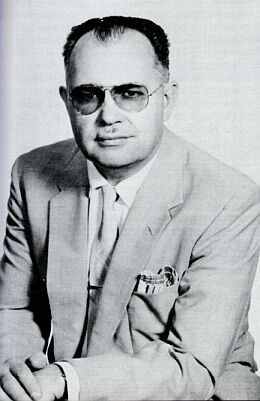
In 1950, Leo Fender introduced the Fender Telecaster, the first mass-produced solid-body electric guitar. This groundbreaking instrument featured a simple design, with a single-cutaway body, two pickups, and a bolt-on neck, making it affordable and accessible to a wider range of musicians. The Telecaster quickly gained popularity among country and blues guitarists for its bright, twangy sound and distinctive look.
The 1950s and 1960s marked the golden age of electric guitars, with numerous iconic models being introduced by companies such as Fender, Gibson, and Rickenbacker. In 1952, Gibson released the Les Paul, a solid-body electric guitar designed in collaboration with the renowned guitarist Les Paul. The Les Paul featured a set-neck design, two humbucking pickups, and a carved maple top, giving it a warm, rich sound that became synonymous with rock ‘n’ roll.
In 1954, Fender released the Stratocaster, a solid-body electric guitar with a contoured body, three single-coil pickups, and a revolutionary tremolo system. The Stratocaster’s versatile sound and ergonomic design made it an instant hit, and it quickly became the go-to instrument for guitarists like Jimi Hendrix, Eric Clapton, and Stevie Ray Vaughan.
The 1960s also saw the introduction of other iconic electric guitars, such as the Gibson SG, the Rickenbacker 360, and the Fender Jaguar. These instruments, along with countless others, shaped the sound of popular music during this era and cemented the electric guitar’s place in music history.
The development of the electric guitar and American music
In the southern United States, music began to develop as African and European influences mixed between black and white people. It is almost certain that the instrument, made from a gourd covered with leather, is the predecessor of the modern banjo. In those days, slaves also made their guitars from large cigar boxes, brooms, and rope. But most of the guitars in Colonial America at that time were made in England.
In the southwestern United States, Mexicans played the guitar as well as the 16th-century vihuela. Spanish missionaries brought instruments to California, and cowboys also used the guitar to calm the herds on the night prairies.
Blues music originated in the Mississippi Delta and developed from work songs, shouts, and other field calls. Harmonious gospel tunes were often accompanied by banjos and later primitive guitars, sometimes played with a metal rod or bottleneck. Running it across the strings created the whining and whining sound so typical of the blues, but now widely used in other musical styles.
Music has always contributed greatly to religion in both the rural South and the Midwest. All social activities at that time revolved around religion. The guitar was often played on farms, plantations, and mining camps. The instrument was easy to transport, it was relatively inexpensive, and almost anyone could learn to play three or four chords on it.
In big cities, poor people took their guitars out into the street. American blues, country, and folk music focused on the guitar for the same reasons: it was inexpensive, easy to transport, easy to play, and sounded good.
In the jazz bands of New Orleans and Chicago, guitar playing was not so easy. No matter how hard the detuned guitarist hit, he never rose above the horn section and piano. But soon these self-ignoring guitarists were able to take revenge through the microphone, amplifying the instrument.
Electricity had a major impact on many guitarists, but the public did not everywhere appreciate the new form of energy. Many new tunes and inventive developments were contributed by Eddie Long, Freddie Green, Charlie Christian, and Eddie Condon. Between the ages of twenty and forty-one, Eddie Condon was one of the most important men in the Chicago jazz scene. The development of the (electric) guitar occurred at a rapid pace during this period. Eddie Durham may well have been the first musician to play the electric guitar.
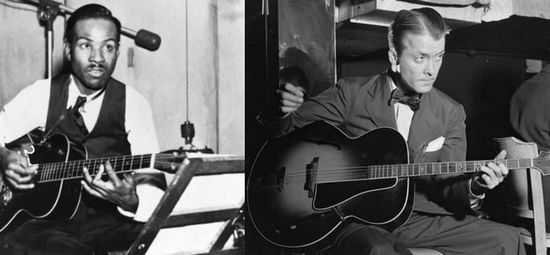
An equally important guitarist was the French gypsy Django Reinhardt. He was born on January 23, 1910, in Liversie, Belgium, and played guitar from the age of twelve. The disaster occurred on November 2, 1928. There was a fire in his caravan, and Django was able to escape at the last minute, suffering severe burns. As a result of this accident, he lost two fingers on his left hand. His musical career seemed over. But he trained hard for two years and managed to develop a three-finger playing style that was even more unique than before the accident.
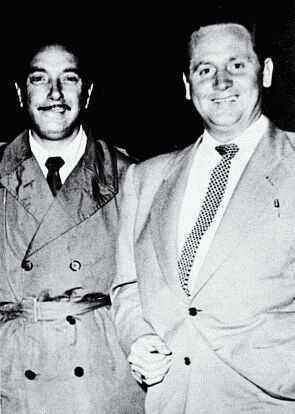
Django was Europe’s answer to American jazz and influenced many American peers, especially after World War II, such as Les Paul, B.B. King, and Wes Montgomery. With his group Quintet Du Hot Club de France, which included violinist Stéphane Grappelli and his brother Joseph, he created a sensation. Django Reinhardt died in Fontainebleau in 1953 from the effects of a cerebral hemorrhage and left behind historical records.
Over the past 50 years, inventive guitarists such as Les Paul, Kenny Burrell, Jim Hall, George van Eps, Barney Kessel, Wes Montgomery, Tal Farlow, Herb Ellis, and Joe Pass have experimented extensively with different time signatures and melodies.
In country music, the guitar was used by almost every artist: Hank Williams, Jimmie Rodgers, Hank Snow, Ernest Tubb, Merle Haggard, and, of course, instrumentalists such as Roy Clark, Merle Travis, Glen Campbell, and Jimmy Bryant.
Mr. Guitar himself, Chet Atkins, is one of the world’s most versatile and respected guitarists. He started with primitive means, stringing a ukulele with wire from a screen door, built various guitars himself, and developed new methods of playing and recording. In recent years, the Tennessee musician has also branched out into the classical and popular realms, but instrumental country remains his signature. Chet Atkins’ style is a combination of smooth melodies, harmonies, and a powerful, subdued bass line played simultaneously.
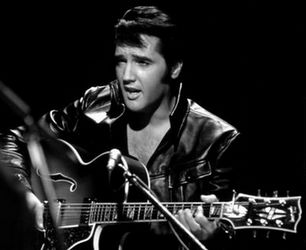
Despite everything, the masses weren’t listening to jazz or country guitarists after World War II, but in the mid-1950s, a new kind of music changed everything. Among the pop singers and interpreters of sugary ballads, the king of rock and roll has risen. Armed with sensual lips, swaying hips, long black hair, and wide sideburns, dressed in tight leather and pointy shoes, 80 pounds of pure sex and power: a truck driver from Tupelo named Elvis Presley.
He was a completely new phenomenon, and American youth, which began to develop as a fairly homogeneous subculture, found a new hero, hated by their parents. He was perfect! Everyone soon realized that this writhing maniac was no ordinary musician. One of his main features was that he played the guitar. He struck furiously, hit himself with the instrument, turned it around, and stuck it behind his back. It was pure, explosive showmanship, and as Elvis rose to the dizzying heights of his legendary super status, he was accompanied by his sidekick: a six-string box.
Elvis was kind, religious, and, above all, respected his parents. Even though he made his first record for his mother, he has come under attack from modest and conservative radio hosts because they think he has a bad image among young people. However, a new generation supported Elvis and bought 10 million records from him in 1956. Many people started playing guitar thanks to Elvis.

The young man looked at Elvis and said, “What he can do, I can too.” When it came to guitar playing, they were right: songs like “Hound Dog,” “Surfin USA,” “This Land is Your Land,” “Mr. Tambourine Man,” and many other similar songs were easy to play. Plus other rock, blues, country, and folk songs from B.B. King, Bob Dylan, Joan Baez, The Rolling Stones, and many others.
Elvis himself was no more and no less than the average guitarist. The real guitar work was done by his regular guitarist and friend Scotty Moore, who came up with the quirky and original riddles so typical of rock ‘n’ roll.
The duo of composers Jerry Leiber and Mike Stoller also played a significant role in the success, guaranteeing many hits. Not to mention Elvis’ manager, Colonel Tom Parker.

Andreas Cornelis (Dries) van Kuyk, born in 1909 in Breda, the Netherlands, had a keen sense of how the music and phenomenon of Elvis Presley should be marketed.
After military service deliberately planned by Colonel Parker, Elvis worked on a comeback. In the mid-1970s, the King again reached the top. However, his success proved fatal. On August 16, 1977, Elvis died at his Graceland mansion in Memphis from the effects of excessive drug use. However, after his death, Elvis became more popular than ever, and his records/CDs are still eagerly purchased. The titles are being re-released again and still retain their popularity as they skyrocket up the charts again.
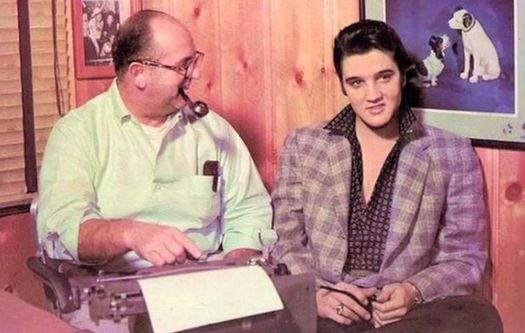
In the early days of rock and roll, instrumental songs were very popular. All you had to do was turn on the radio and you would hear a saxophone, guitar, or organ. Records like Tequila by the Champs and Red River Rock by Johnny and the Hurricanes received good reviews. “Walk Don’t Run,” a Ventures classic, stayed on the charts for nearly five months and peaked at number two.
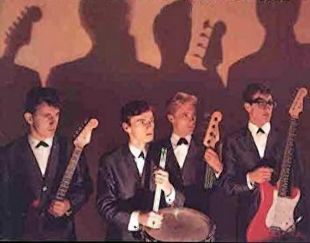
In England, The Shadows made their mark with songs such as Apache, Atlantis, Wonderful Land, and many others. Duane Eddy claimed to have invented the stringing technique. He made a large number of hits playing only the low strings. Later he learned that there were even more of them. Like other records of the time, Duane Eddy’s record was not polished up to today’s standards, but songs like Ramrod, Rebel Rouser, and Cannonball were sensations and sounded best when played hard. He showed that you can create good music with simple means.
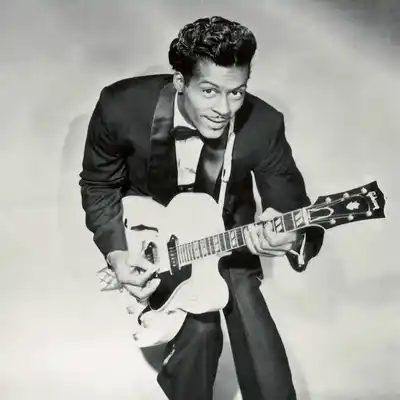
Chuck Berry, on the other hand, developed a style of guitar playing characteristic of rock ‘n’ roll: “Oh my, but that country boy could play.” Chuck wrote in the original text by Johnny B. Goode about “Colored Boy.” The record bosses had a hard time with this since at that time blacks in the United States were not yet considered full fellow citizens and were therefore replaced with “country boys.”
The two strings that Chuck Berry played during his famous “Duck Walk” were heard from every jukebox. And those who often threw coins at him were, in particular, Mick Jagger, Keith Richard, Marc Bolan, Eric Clapton, George Harrison, and Jimmy Page.
There were few truly good guitarists, but fortunately, there were exceptions, such as Mickey Baker, who performed the calypso hit “Love Is Strange” by Mickey & Sylvia with melodic guitar playing and a bluesy rhythm at the end of each verse.

Good “Southern guitar” work can be heard in the rockabilly songs of Carl Perkins (Blue Suede Shoes), Buddy Holly (That Will Be The Day), Eddie Cochran (Summertime Blues), and Bill Haley (Rock Round The Clock).
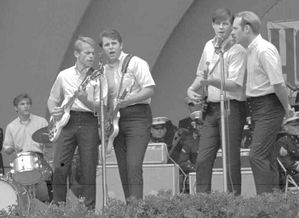
Surf music also contributed to the popularization of the guitar. At first, this style was successful only on the West Coast of America, but after some time the music spread throughout the world. The most famous surf band is, of course, still The Beach Boys, but the aforementioned instrumental group The Ventures also fell into this category. Surf band guitarists mostly played Fender guitars, with the Stratocaster being especially popular.
The first wave of rock and roll also led to an increase in interest in traditional American music. The Kingston Trio is a good example of this. Neatly trimmed, they sang lyrics about railroad tracks, legendary heroes, and the execution of notorious bandits (Tom Dooley), all in close harmony, of course.
Pete Seeger, Joan Baez, and Phil Ochs sang about similar themes but also presented their ideas on topics such as politics, war, civil rights, and famine.
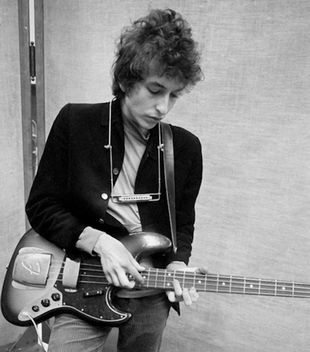
Few people outside the coffee house circuit knew a certain Bob Dylan. But The Byrds and Sticky Peter, Paul, and Mary were commercial enough to use some of his ideas and messages in the mid-1960s to achieve huge success. Bob Dylan charts with Lesley Gore, Jan & Dean, and Freddie & The Dreamers.
The public wanted to know more about honest music without gimmicks, they wanted songs with new ideas that would make them think, songs about real people. As this new folk music had its roots in blues, country & western, people began to rediscover musicians such as Hank Williams, Doc Watson, Woody Guthrie, Robert Johnson, Jack Elliot, Mississippi John Hurt, Blind Lemon Jefferson, Son House, Walter “Furry” Lewis, Leadbelly, Sam ‘Lightning’ Hopkins, Josh White, Fred McDowell, and Brownie McGhee.
Some were descendants of slaves, itinerant workers, and tenant farmers. Most of them did not live long enough to enjoy this appreciation. Others became famous only after they turned seventy. There have been as many attempts to classify the styles of these singers as there have been writers who write about them. However, the common factor was that they all played guitar.
Effects and Amplification
The invention of the electric guitar also led to the development of guitar amplifiers and effects pedals, which allowed musicians to further shape and manipulate their sound. Distortion, reverb, chorus, and delay are just a few examples of the myriad effects that have been developed to enhance the guitar’s sonic palette.
Guitar amplifiers, too, have evolved over the years, with companies like Marshall, Fender, and Vox introducing iconic models that have become synonymous with specific musical genres. From the warm, clean tones of Fender’s Twin Reverb to the aggressive, high-gain sound of the Marshall stack, guitar amplifiers have played a crucial role in defining the sound of countless musical styles.
The Modern Era
The guitar’s evolution continues to this day, with modern advancements like digital modeling, alternative materials, and extended-range instruments pushing the boundaries of what the guitar can do. The rise of home recording technology and affordable, high-quality guitars has made it easier for aspiring musicians to create and share their music with the world.
From its humble beginnings as a simple stringed instrument to its modern incarnations as an electrified, effects-laden powerhouse, the guitar has undergone an incredible transformation throughout history. Its enduring appeal and adaptability have made it a cornerstone of popular music and continue inspiring generations of musicians and music lovers.